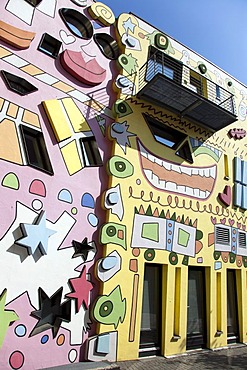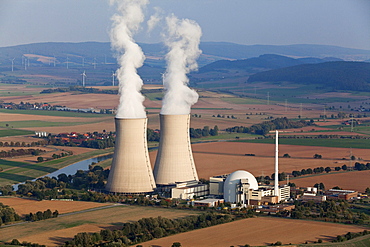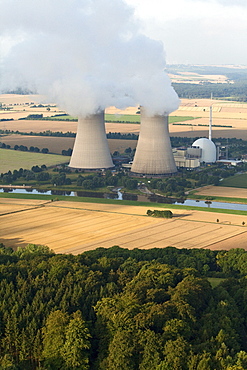Recent searches
Loading...
832-108604 - Secession, Vienna Secession exhibition building, designed by Joseph Maria Olbrich, 1st District, Vienna, Austria, Europe
832-112021 - Flowing mountain stream on an alp, Ulten, Ultimo, Val d'Ultimo, South Tyrol, Trentino-Alto Adige, Italy, Europe
832-111917 - Flowing mountain stream, Alto Adige, Italy, Europe
832-112017 - Flowing mountain stream on an alp, Ulten, Ultimo, Val d'Ultimo, South Tyrol, Trentino-Alto Adige, Italy, Europe
832-112019 - Flowing mountain stream on an alp, Ulten, Ultimo, Val d'Ultimo, South Tyrol, Trentino-Alto Adige, Italy, Europe
832-112018 - Flowing mountain stream on an alp, Ulten, Ultimo, Val d'Ultimo, South Tyrol, Trentino-Alto Adige, Italy, Europe
832-115951 - Historic mountain village of Ushguli, UNESCO World Heritage site, Svaneti province, Georgia, Middle East
832-112014 - Flowing mountain stream on an alp, Ulten, Ultimo, Val d'Ultimo, South Tyrol, Trentino-Alto Adige, Italy, Europe
832-112020 - Flowing mountain stream on an alp, Ulten, Ultimo, Val d'Ultimo, South Tyrol, Trentino-Alto Adige, Italy, Europe
832-112015 - Flowing mountain stream on an alp, Ulten, Ultimo, Val d'Ultimo, South Tyrol, Trentino-Alto Adige, Italy, Europe
832-111375 - Waterfalls on the Bode River in autumn near Braunlage, Lower Saxony, Germany, Europe
832-90931 - Huka Falls, Waikato River, Taupo, North Island, New Zealand
832-82678 - Detail, Happy RIZZI House, Braunschweig, Lower Saxony, Germany, Europe
832-75971 - MUSAC Museo de Arte Contemporaneo de Castilla y Leon or Museum of Contemporary Art of Castile and Leon, Leon, Castilla y Leon, northern Spain, Europe
832-75977 - MUSAC Museo de Arte Contemporaneo de Castilla y Leon or Museum of Contemporary Art of Castile and Leon, Leon, Castilla y Leon, northern Spain, Europe
832-75980 - MUSAC Museo de Arte Contemporaneo de Castilla y Leon or Museum of Contemporary Art of Castile and Leon, Leon, Castilla y Leon, northern Spain, Europe
832-75976 - MUSAC Museo de Arte Contemporaneo de Castilla y Leon or Museum of Contemporary Art of Castile and Leon, Leon, Castilla y Leon, northern Spain, Europe
832-75979 - MUSAC Museo de Arte Contemporaneo de Castilla y Leon or Museum of Contemporary Art of Castile and Leon, Leon, Castilla y Leon, northern Spain, Europe
832-81086 - Huka Falls, Waikato River, Taupo, North Island, New Zealand
832-82676 - Detail, hearts, Happy RIZZI House, Braunschweig, Lower Saxony, Germany, Europe
832-82677 - Happy RIZZI House, Braunschweig, Lower Saxony, Germany, Europe
832-82680 - Happy RIZZI House, Braunschweig, Lower Saxony, Germany, Europe
832-75978 - MUSAC Museo de Arte Contemporaneo de Castilla y Leon or Museum of Contemporary Art of Castile and Leon, Leon, Castilla y Leon, northern Spain, Europe
832-77886 - Excursion boat with rainbow directly at the Niagara Falls, Niagara Falls, Ontario, Canada, North America
832-62617 - Iguazu or Iguacu falls viewed from the Brazilian side, Unesco National Park, Misiones Province, Argentina, South America
832-62618 - Tourists on a footbridge in front of the Iguazu or Iguacu falls, Brazilian side, Unesco National Park, Misiones Province, Argentina, South America
832-53591 - Ilse river in autumn, Ilsenburg, Harz National Park, Saxony-Anhalt, Germany, Europe
832-53589 - Ilse river in autumn, Ilsenburg, Harz National Park, Saxony-Anhalt, Germany, Europe
832-40258 - Manitou river, Duplessis region, Quebec, Canada
1113-64781 - Canoeing at Opeongo River, Algonquin Provincial Park, Ontario, Canada, North America, America
1113-64742 - Float race, Klondike Days, Saskatchewan River, Edmonton, Alberta, Canada, North America, America
1113-61399 - Twin Falls, Telegraph Road, Jardine River National Park, Cape York Peninsula, Queensland, Australia
1113-60308 - Wairakei Geothermal Power Station, Pipelines and steam at sunset, near Taupo, North Island, New Zealand
1113-52286 - People at Godafoss Waterfall, Skjalfandafljo River, Near Akureyri, Iceland
1113-55199 - Tidal Current, Saltstraumen, Bodo, Nordland, Norway
1113-39785 - Aerial photo of the nuclear power plant Grohnde and the Weser River, Lower Saxony, Germany
1113-42154 - Suspension bridge over Spasmiata river, Foret de Bonifatu, Corsica, France, Europe
1113-39786 - Aerial photo of nuclear power plant Grohnde, Weser River, Lower Saxony, Germany
1113-35580 - Aerial view of a fossil-fuel power station with cooling towers, Buschhaus Power station, Helmstedt, Lower Saxony, northern Germany
1113-37986 - Hiker at Abisko river canyon, Abisko National Park, Lapland, northern Sweden, Sweden
1113-38011 - Abisko river canyon, Abisko National Park, Lapland, northern Sweden, Sweden
1113-32598 - Historic River Rafting on the river Kinzig, Wolfach, Valley Kinzigtal, Southern Part of Black Forest, Black Forest, Baden-Wuerttemberg, Germany, Europe
1113-27873 - Weir, lake Baldeney, Essen, Ruhr district, North Rhine-Westphalia, Germany
1113-27870 - Weir, lake Baldeney, Essen, Ruhr district, North Rhine-Westphalia, Germany
1113-5647 - BMW Welt. Designed by architect Wolfgang Prix, Coop Himmelb(l)au, a multi-functional customer experience and exhibition facility presenting current products of BMW with a distribution centre for BMW cars, an event forum and a conference centre, Munich, Bavaria, Germany, Europe
1116-29046 - Hawaii, Oahu, Beautiful wave breaking, shot between Sandy's and Makapu'u.
1116-37530 - Marshall Islands, Kwajalein Atoll, Pair of jellyfish (Olindas sp?)
1116-31100 - Hawaii, Oahu, View of Mokolii Island and East Oahu view from ocean
1116-29433 - Hawaii, Maui, Olowalu, Stand up paddling.
1116-29435 - Hawaii, Maui, Olowalu, Stand up paddling.
1116-30343 - Hawaii, Maui, North Shore, Mark Raaphorst stand up paddling.
1116-37529 - Hawaii, Translucent jellyfish (Cephea cephea) floats in deep blue water.
1116-28532 - California, Morro Bay, Silhouette of man jogging on beach.
1116-28533 - California, Morro Bay, Silhouette of surfer on beach.
1116-30341 - Hawaii, Maui, North Shore, Mark Raaphorst stand up paddling.
1116-29886 - Hawaii, Underwater view of powerful wave breaking over shallow coral reef.
1116-29303 - Micronesia, Yap, Underwater view of wave.
1116-29338 - Hawaii, Oahu, Lanikai, Stand up paddling.
1116-29044 - Hawaii, Oahu, Beautiful wave breaking, shot between Sandy's and Makapu'u.
1116-29434 - Hawaii, Maui, Olowalu, Stand up paddling.
1116-30687 - Hawaii, Oahu, North Shore, Beautiful wave breaking.
1116-29340 - Hawaii, Oahu, Lanikai, Stand up paddling.
1116-34470 - Thailand, Phuket, the streets flood with water in the 12/04 Tsunami.
1116-29335 - Hawaii, Oahu, Lanikai, Young girl stand up paddling.
1116-31777 - Hawaii, crashing blue underwater wave.
1116-29436 - Hawaii, Maui, Olowalu, Stand up paddling.
1116-3913 - A Gannet Colony, Muriwai Beach, New Zealand
1116-3048 - Lake And Trees In Fall Near Swift Current, Burin Peninsula, Newfoundland, Canada
1116-890 - Ha'penny Bridge Over The River Liffey In Dublin, Ireland
857-58885 - SHWEDAGON IN YANGON 'The Golden Dragon' is the most sacred of all Buddhist sites in the country. The golden dome rises 98m above the base. According to legend the stupa dates back 2500 years, in it's current form it dates back to 1769.
857-58841 - SHWEZIGON PAYA PAGAN 'The Golden Dragon' is the most sacred of all Buddhist sites in the country. The golden dome rises 98m above the base. According to legend the stupa dates back 2500 years, in it's current form it dates back to 1769.
857-58884 - SHWEDAGON IN YANGON 'The Golden Dragon' is the most sacred of all Buddhist sites in the country. The golden dome rises 98m above the base. According to legend the stupa dates back 2500 years, in it's current form it dates back to 1769.
857-33973 - Men and boys on bikes ride past a towering, ancient minaret, outside of Ghazni, Afghanistan, October 1, 2002. Made of brick decorated with Kufic and Naksh Script and floral motifs, the minaret dates back to the early 12th century and was built by Sultan Masud III of the Ghaznavid Dynasty, who ruled over an empire encompassing much of Afghanistan, Northern India, Persia and Central Asia. The minaret was once three times as tall as its current 70 feet, and is thought to have been part of a large mosque complex. Now an important truck stop on the road to Kandahar, Ghazni, located on the Lora River at the elevation of 2,225 meters, is the capital of Ghazni province and is a market for sheep, wool, camel hair cloth, corn, and fruit-it also continues to be a haven for Taliban insurgents.
857-33933 - Women in burqas flock like doves to the entrance of the main mosque at the Blue Mosque complex, Mazar-i-Sharif, Balkh Province, September 23, 2002. Wednesday mornings are reserved for women to come and worship at the mosque.Elaborate tilework and decorated spires adorn the mosque, also known as the Shrine of Hazrat Ali (Hazrat Ali was the son-in-law of the prophet Mohammed), who is believed to be buried here. The shrine, of particular importance for Afghanistan's Shi'ite Muslims, was first built in the 12th century, destroyed by Genghis Khan, and rebuilt in 1481. The current mosque, considered by some to be one of the most beautiful in Central Asia, is a modern restoration.
857-33936 - A man feeds white doves at dawn in front of the Blue Mosque, Mazar-i-Sharif, Balkh Province. Hundreds of doves, who are fed by worshippers and tended by special workers, live around the mosque, and it is thought that the place is so holy that a grey or brown dove will turn white if it lands on the Mosque. The mosque is also known as the Shrine of Hazrat Ali (Hazrat Ali was the son-in-law of the prophet Mohammed), who is believed to be buried here. The shrine, of particular importance for Afghanistan's Shi'ite Muslims, was first built in the 12th century, destroyed by Genghis Khan, and rebuilt in 1481. The current mosque, considered by some to be one of the most beautiful in Central Asia, is a modern restoration.
857-33971 - Afghan men pause on the road with an ancient brick minaret and many shrines in the background, outside of Ghazni, Afghanistan, October 1, 2002. Made of brick decorated with Kufic and Naksh Script and floral motifs, the minaret dates back to the early 12th century and was built by Sultan Masud III of the Ghaznavid Dynasty, who ruled over an empire encompassing much of Afghanistan, Northern India, Persia and Central Asia. The minaret was once three times as tall as its current 70 feet, and is thought to have been part of a large mosque complex. Now an important truck stop on the road to Kandahar, Ghazni, located on the Lora River at the elevation of 2,225 meters, is the capital of Ghazni province with a population of 35,900, and is a market for sheep, wool, camel hair cloth, corn, and fruit, and continues to be a haven for Taliban insurgents.
857-33935 - Tajik women proudly pose with their children, burqa's thrown back, in front of the main entrance to the Blue Mosque, Mazar-i-Sharif, Balkh Province. Wednesday mornings are reserved for women to come and worship at the mosque. Elaborate tilework and decorated spires adorn the mosque, also known as the Shrine of Hazrat Ali (Hazrat Ali was the son-in-law of the prophet Mohammed), who is believed to be buried here. The shrine, of particular importance for Afghanistan's Shi'ite Muslims, was first built in the 12th century, destroyed by Genghis Khan, and rebuilt in 1481. The current mosque, considered by some to be one of the most beautiful in Central Asia, is a modern restoration.
857-33969 - Men on bikes ride past an ancient brick minaret toward the old walls and citadel of the town of Ghazni, Afghanistan, October 1, 2002. Made of brick decorated with Kufic and Naksh Script and floral motifs, the minaret dates back to the early 12th century and was built by Sultan Masud III of the Ghaznavid Dynasty, who ruled over an empire encompassing much of Afghanistan, Northern India, Persia and Central Asia. The minaret was once three times as tall as its current 70 feet, and is thought to have been part of a large mosque complex. Now an important truck stop on the road to Kandahar, Ghazni, located on the Lora River at the elevation of 2,225 meters, is the capital of Ghazni province with a population of 35,900, and is a market for sheep, wool, camel hair cloth, corn, and fruit.
832-18401 - Stream which feeds the third Rheinbach waterfall at the hiking trail with religious sculptures called reflection of the sun song or Franziskus path Sand in Taufers South Tyrol Italy
1196-86 - Trulshig rinpoche, blesses. Tulshig rinpoche blesses. Tulshig rimpoche s followers believe that he, like many other lamas, reassumes a human body after death in order to return to disciples. previous incarnation of tulshig rimpoche spent several years at dzarongpu monastery (highest monastery in world located at 16,500’ within sight of northern side of mt everest) served as of ngawong tenzin teachers. He promised to return in next life, so at tulshig s death ngawong tenzin norbu sought found reincarnation. current tulshig rimpoche then came to monastery studied with ngawong tenzin norbu. relationship between teacher student, in which a teacher returns to study from former student, maintains lineage over generations. Bhutan



































































































